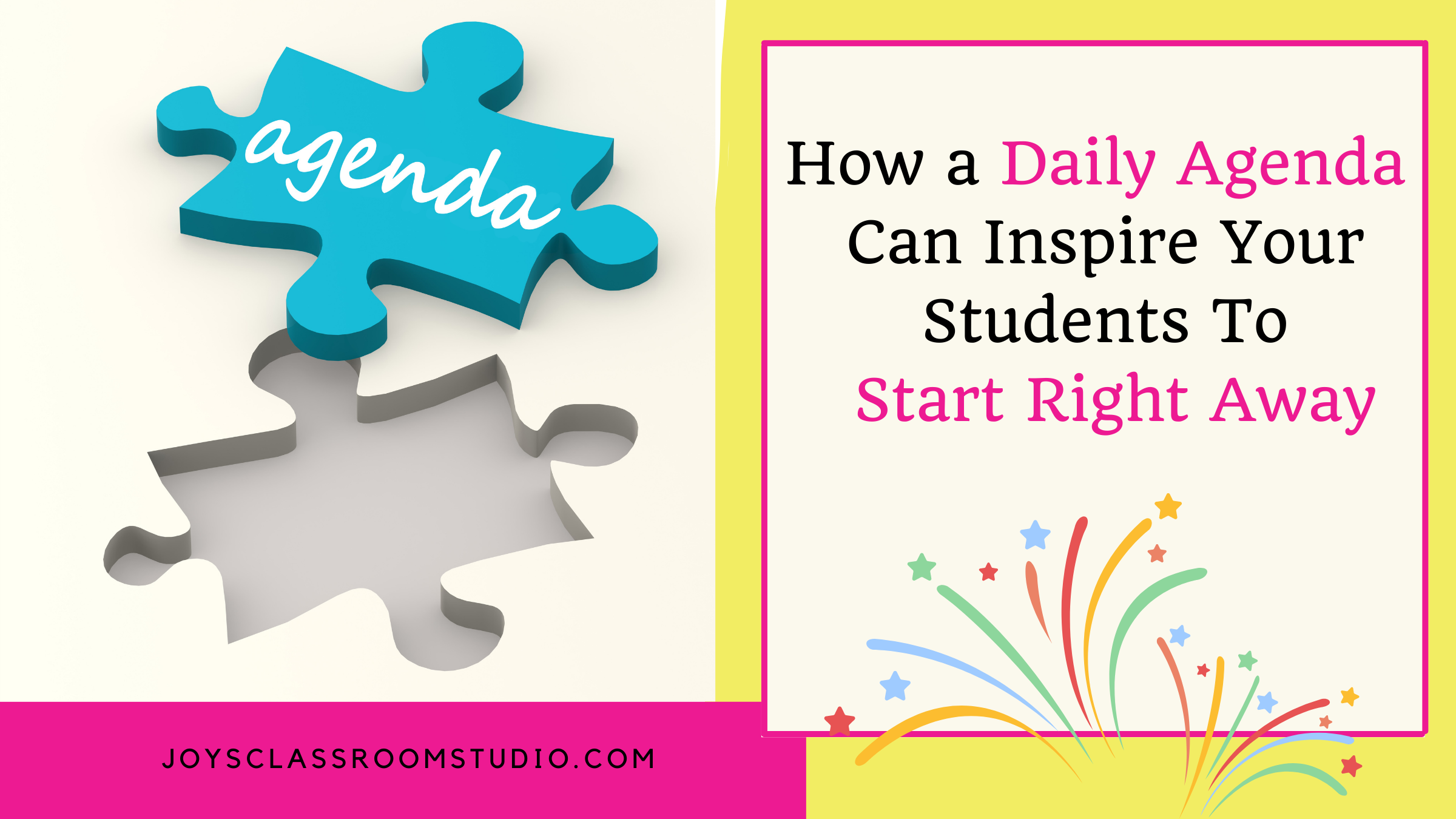
Do your students know what to do when they come into your classroom? Or is the start of class chaotic without a clear routine? Perhaps, students have tons of questions as they enter. So many questions that you are not capable of answering every single one of them! Do you feel like minutes are lost at the start of class and you just aren’t sure how to gain those minutes back? Well, have you tried using a daily agenda with your students? This can allow students to know just exactly what to expect during class time.
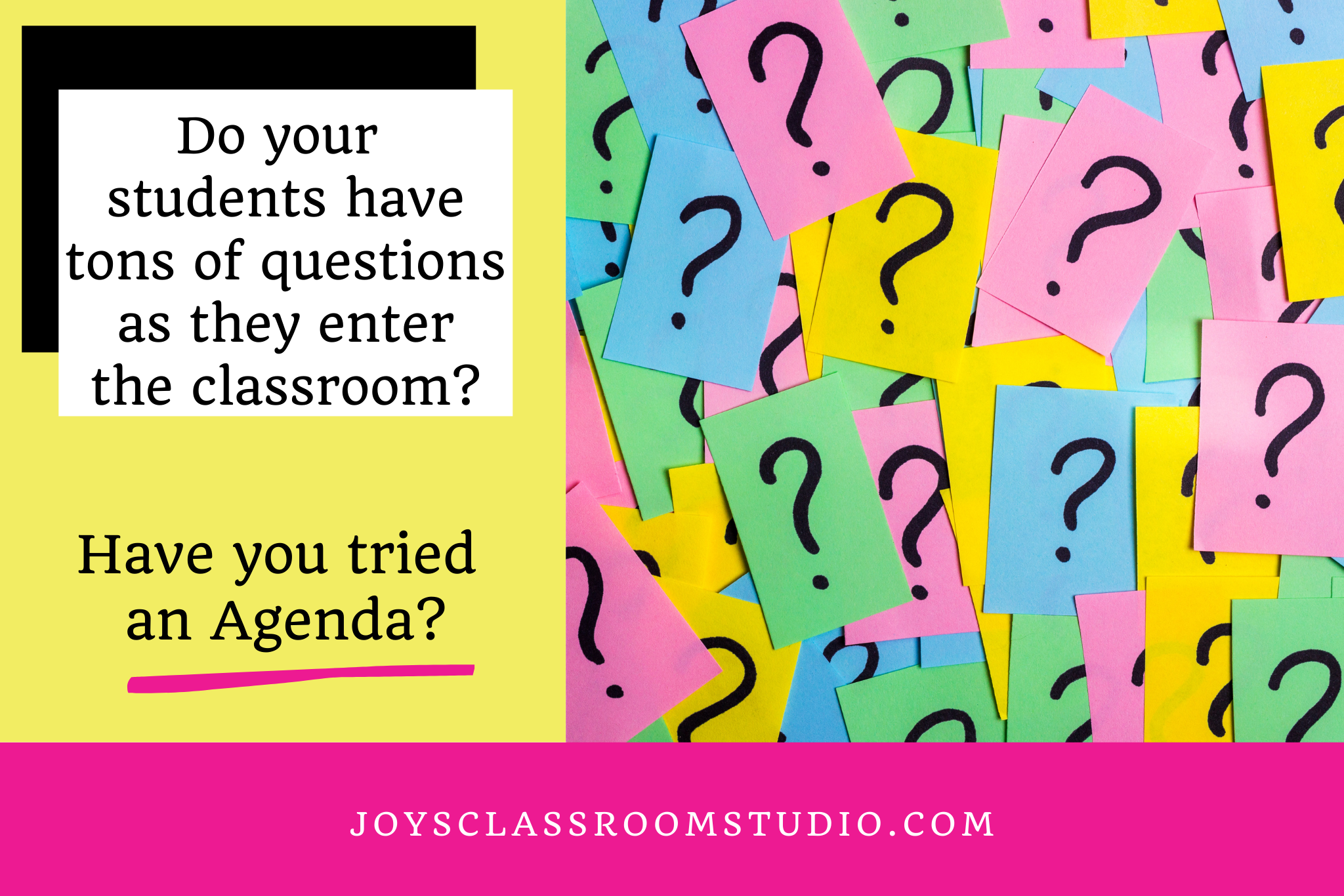
The What?
Daily Agenda Vs. Schedule
What’s the difference between posting an agenda and posting a schedule, you might ask? Well, when I began teaching in the elementary classroom, I would post a daily schedule. The morning events would go a little like this; morning work, morning meeting, specials, and reading block. And the afternoon schedule would have the rest of the day’s tasks ending with dismissal.
Over the years, I felt my students needed more information about the structure of our class time together. So I started to post an agenda along with the schedule and found it to be very beneficial.
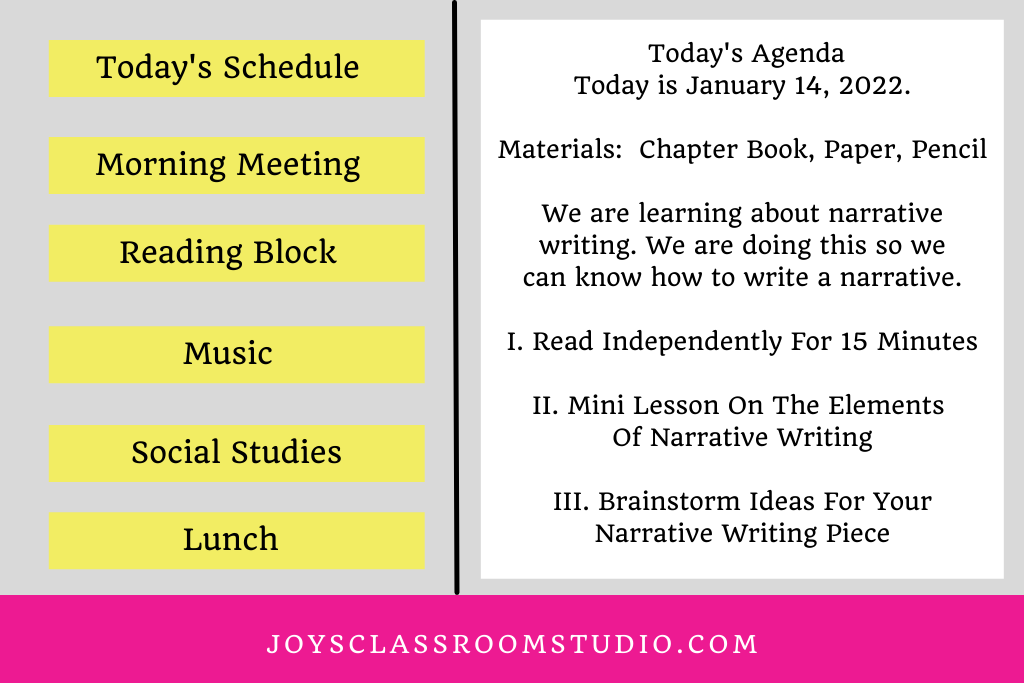
Now that I teach middle school I find it even more imperative to post an agenda with older students! I still post the schedule with the time each class period starts and ends. But the daily agenda is key and what we focus on daily to guide instruction! I post the agenda in the classroom on the smartboard and virtually in our ELA Google Classrooms.
By using an agenda students have more details as to what is happening during that class period. Now students have specifics instead of just having a general idea about what time reading class will start and end. Both a schedule and an agenda are important in the classroom! But an agenda is a tool that will help keep you and them organized!
The Why?
I’m sure as a teacher you have attended an all-day professional development meeting. And all morning you found yourself thinking what are we going to do next? Or perhaps you’ve thought of the following questions: When are we going to use the materials they told us to bring? Or how does this fit in with what I am already doing in the classroom? Just like us, our students have countless questions going through their minds when they enter class.
10 Reasons To Use A Daily Agenda
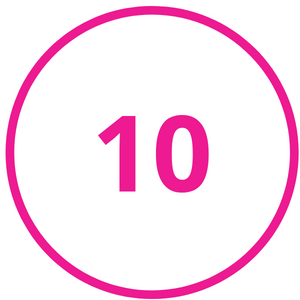
Stay On Task
Using a daily agenda helps you the teacher to stay on task. Review the agenda each day with your students. Review the agenda each class period. This helps you to focus on what you want to accomplish with students. It helps to keep you accountable for what you have planned for the day. When teaching lessons you can check off what you have done. And make note of what needs to be continued into the next day.
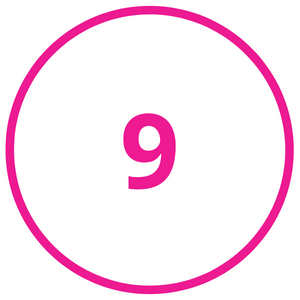
Guide Students
Using a daily agenda helps to guide students in knowing what to expect for the class period. They can read what is on the agenda for the day and expect to do those activities. It also helps to answer students’ main question: “What are we going to do today?” And now you are prepared to answer with your agenda, “Today we will…” and “We are doing this so we can…”
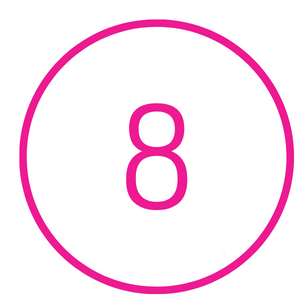
Get Students Working
By using a daily agenda I am able to get students started on classwork right away! They can do this without waiting for me to “officially” begin class. I can greet students as they enter the class. Tell them to please read the agenda and get started working. This allows me to have time to address any immediate concerns, questions, or potential distractions at the start of class.
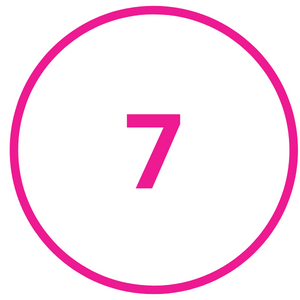
Answer Questions
The agenda will clearly tell students what they will do that day along with the standard or objective. I do not write out the standard but I use language students will understand. Here is an example, Today we will work on our narrative writing. We are doing this so we can understand the elements of narrative writing and are able to write a narrative writing piece.
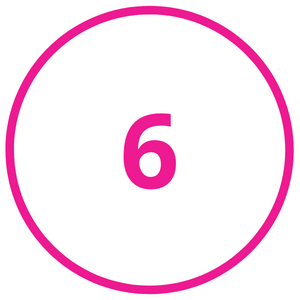
Set The Tone
Having an agenda readily available for students to read helps set the tone for your class period. Students know you are prepared for class and have a plan for the time you will spend together. Students will quickly learn the routine. An agenda helps leave minimal time for off-task behavior and distractions since transitioning from one activity to the next is expected.
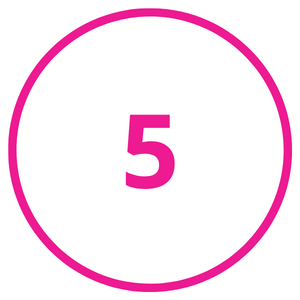
Assignments
Write the assignments and page numbers on the agenda to help students stay on track. Students can see ahead of time what they will be working on that day. They can gather their materials at the start of class so they are ready. If they finish up an assignment early, they can be ready for the next task. It also helps minimize the constant calling out of “What book?”,“What page?”
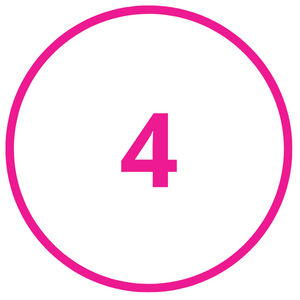
Organizes The Class
Need to keep students organized? I’m sure you do, we all do! A daily agenda helps organize the class period. When using a daily agenda students can see how the class period will be broken down into different activities. This is helpful in reducing student anxiety about the class period and what is expected.

Make It Virtual
Make your daily agenda virtual by posting it to the learning management system used by your school. This is helpful in helping students stay on track with their assignments. If they are absent students can still know their assignments. It is also helpful during class for students who sit in the back of the class and have a hard time seeing the smartboard.
It was especially helpful when teaching during the pandemic. When teaching virtually, I continued to post the daily agenda every day in order for students to see what they needed to be working on.
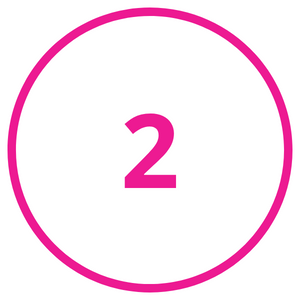
Informs Visitors
When visitors come into the classroom they can look at the smartboard. They can read and see what you are teaching students that day. My principal has come into my classroom multiple times and has looked at the smartboard at the agenda first. This allowed her to see what students were working on before interacting with students. Having the agenda posted is a plus because visitors can see what the lesson is about and the expected outcome.
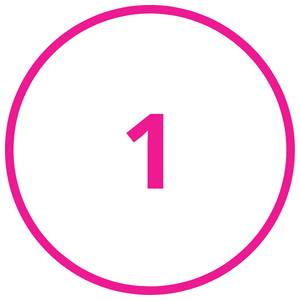
Structure
Using a daily agenda helps build structure in your classroom. Students become familiar with the routine of reading the agenda as they enter class. Many of their questions are answered just by reading the agenda. They can get started working right away because it being posted.
An agenda helps students to know when their independent time for working will begin and end. It lets them know when direct instruction by the teacher begins and ends.
The When?
I started using an agenda in the classroom a couple of years ago when I was teaching 2nd grade. I wanted my students to know the order of our reading block so they would know what to expect. They were able to understand the order of our reading block because of the agenda. We would start the reading block with a read-aloud and then move into a mini-lesson. The end of the reading block would be reserved for guided reading lessons, small groups, and stations.
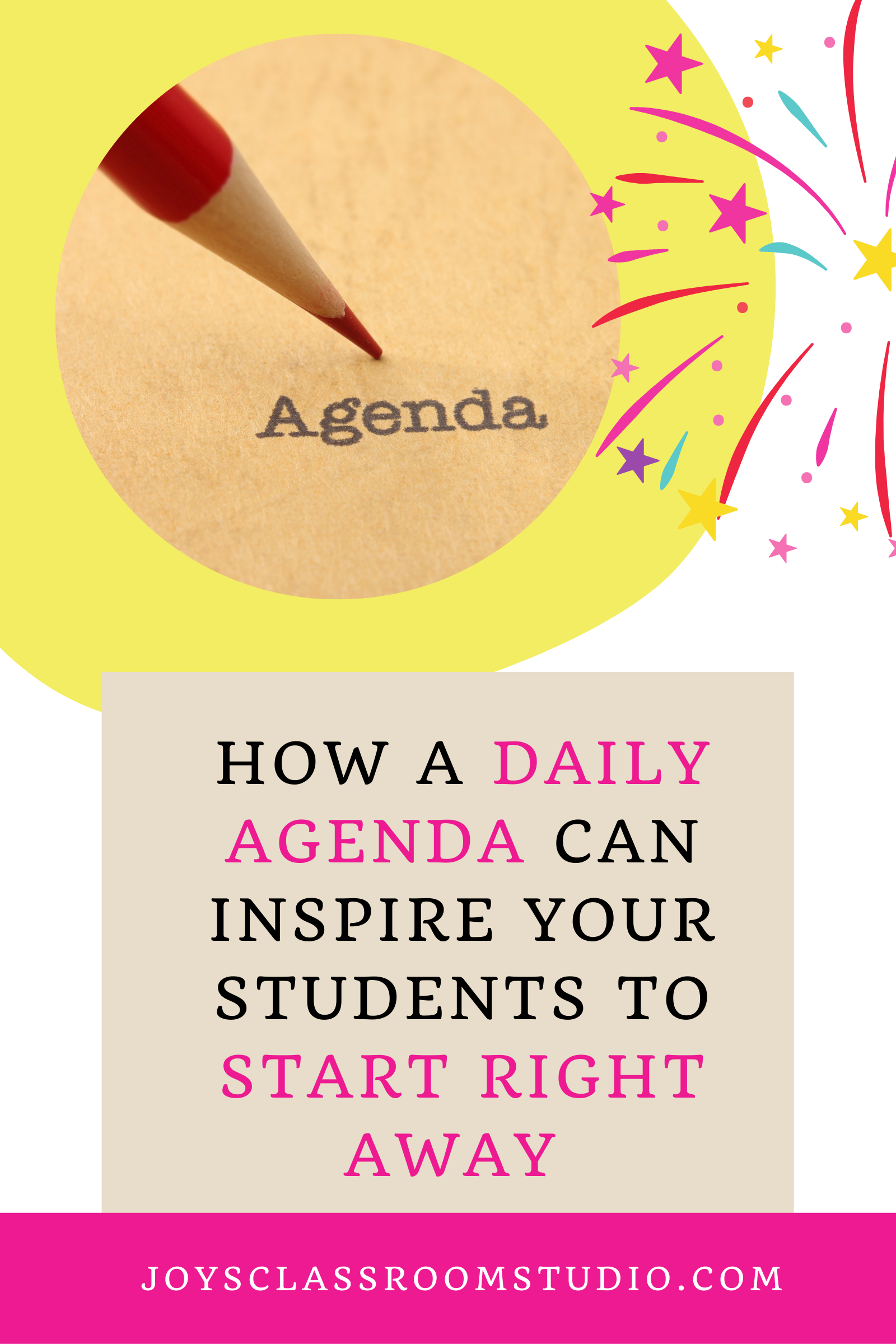
The How?
Now that I teach 6th grade ELA I use the daily agenda to help my students get started working as soon as they enter the classroom! I have the agenda posted on the smartboard as well as in the students’ learning management system.
The way I structure the agenda in 6th Grade ELA is by putting the day and date at the top of the agenda. Next, I list materials that will be needed for that class period. Then, I tell students in a brief statement what we are learning about.
In another brief statement, I tell them the outcome I would like for them to have after the class is done. For example, I might say “Today we will focus on the elements of narrative writing. We are doing this so we can begin writing our narrative writing pieces”. Then using roman numerals I break down what we are doing that class period. For Example; I. Read Independently for 15 Minutes II. Mini-Lesson on the Elements of Narrative Writing III. Brainstorm Ideas for Your Narrative Writing

Conclusion
Using an agenda with students has helped my students to become more independent with their classwork! It has also helped my students and I to stay organized and on task! Of course, there are moments when we do not follow the agenda exactly and I do allow for genuine teaching moments to happen. If you are looking for more structure and student independence in your classroom, give posting a daily agenda a try! If you are looking to start a class reward system in your classroom read my blog post “5 Class Reward System Ideas”.

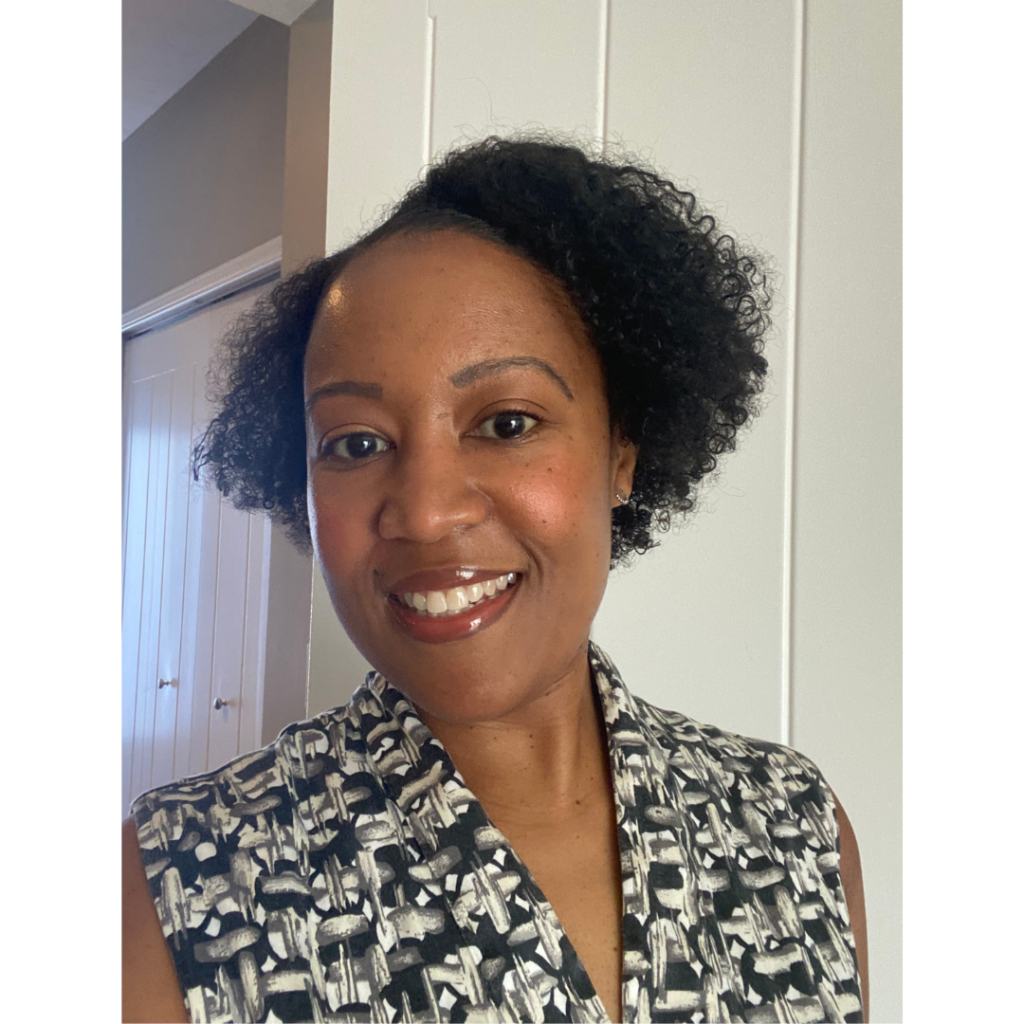
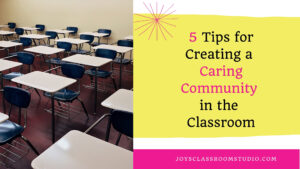
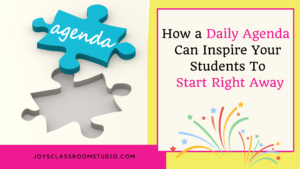
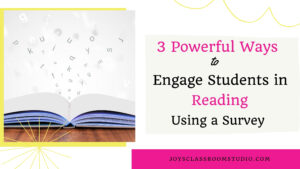
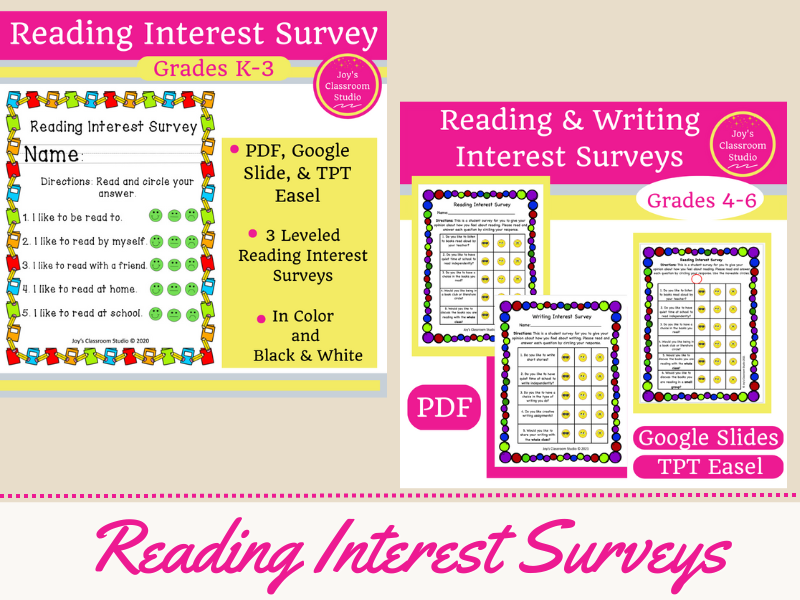
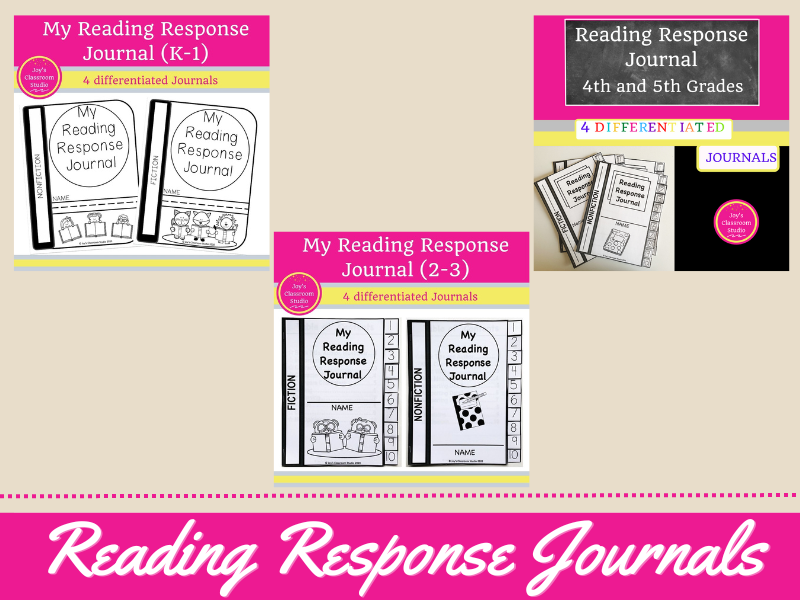
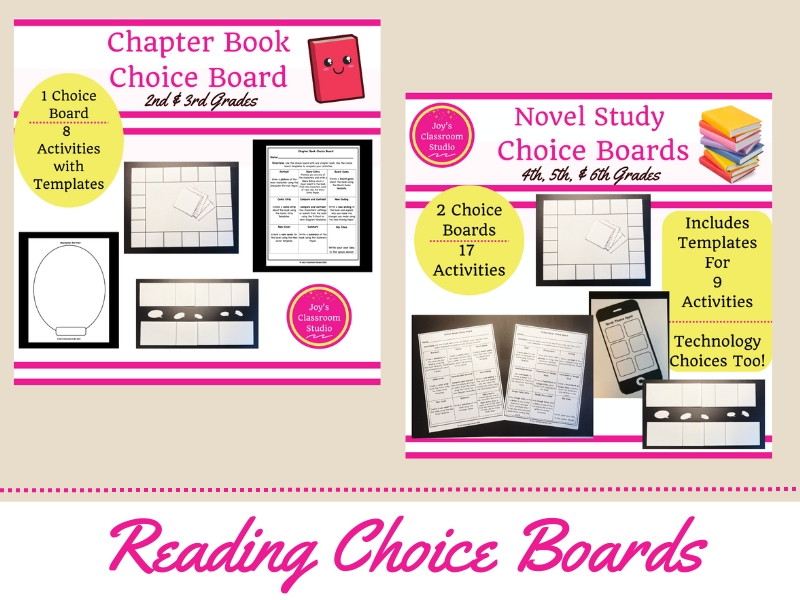
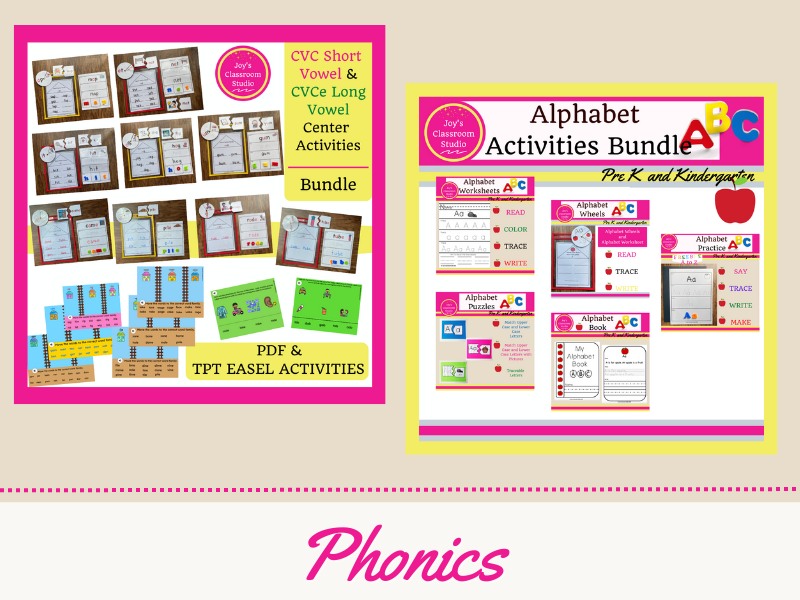

One Response